Photo by Katerina Holmes on Pexels
Are you considering different educational options for your child? One choice that often comes up is whether to enroll them in a Montessori school or a regular school. While both options aim to provide a quality education, there are some fundamental differences between the two approaches. Understanding these differences can help you make an informed decision about which type of school is the best fit for your child’s learning style and needs.
In a Montessori school, the emphasis is on individualized learning and self-directed exploration. The Montessori method, developed by Maria Montessori, encourages children to learn at their own pace and pursue their interests. Unlike regular schools, Montessori classrooms typically have mixed-age groups, allowing younger students to learn from older ones and fostering a sense of community and collaboration. On the other hand, regular schools follow a more structured curriculum, with teachers leading the instruction and students progressing through a predetermined set of lessons and activities.
As you delve deeper into the comparison between Montessori schools and regular schools, you’ll discover more nuances that set them apart. By understanding these differences, you’ll be better equipped to choose the educational environment that aligns with your child’s unique learning style and goals. So, let’s explore the key distinctions between Montessori and regular schools and how they can impact your child’s educational journey.
Benefits of a Montessori School
Choosing the right school for your child is a significant decision. When considering the differences between a Montessori school and a regular school, it’s essential to understand the unique benefits that a Montessori education can offer. Here are some key advantages of choosing a Montessori school for your child:
1. Individualized Learning: In a Montessori school, the focus is on individualized learning. Teachers observe each child’s unique interests, strengths, and learning style, allowing them to tailor their approach to meet the child’s specific needs. This personalized approach fosters a love for learning and encourages children to reach their full potential.
2. Self-Directed Exploration: Montessori schools promote self-directed exploration, giving children the freedom to choose their activities and work at their own pace. This freedom allows children to develop a sense of independence, self-discipline, and a strong intrinsic motivation to learn. They are encouraged to follow their curiosity and explore subjects that interest them, leading to a deeper understanding and enjoyment of learning.
3. Hands-On Learning: Montessori classrooms are filled with carefully designed materials that engage children in hands-on learning. These materials are specifically designed to promote sensory experiences, problem-solving skills, and critical thinking. By actively engaging with the materials, children develop a deeper understanding of concepts and acquire essential skills that will benefit them throughout their lives.
4. Mixed-Age Classrooms: Unlike traditional schools that group children solely based on their age, Montessori classrooms typically have mixed-age groups. This creates a dynamic learning environment where older children serve as mentors and role models for younger ones. Younger children benefit from the guidance of their older peers, while the older children develop leadership skills and reinforce their understanding of concepts by teaching others.
5. Emphasis on Social and Emotional Development: Montessori education recognizes the importance of social and emotional development alongside academic growth. Children learn to work collaboratively, communicate effectively, resolve conflicts, and develop empathy and respect for others. The emphasis on character development and positive social interaction lays a strong foundation for future success in relationships and in life.
As you consider the best educational environment for your child, these benefits of a Montessori school may resonate with you. The individualized learning, self-directed exploration, hands-on experiences, mixed-age classrooms, and focus on social and emotional development make Montessori education a unique and valuable option for your child’s educational journey.
Benefits of a Regular School
Choosing the right educational environment for your child is a significant decision. While Montessori schools offer unique advantages, it’s also essential to consider the benefits of a regular school. Here are some reasons why a regular school may be the right fit for your child:
1. Structured Curriculum: Regular schools typically follow a structured curriculum that is designed to meet specific academic standards. This structured approach ensures that your child receives a well-rounded education, covering a wide range of subjects and topics.
2. Specialized Teachers: Regular schools often have specialized teachers who are experts in their respective fields. Whether your child needs guidance in mathematics, science, or language arts, a regular school is more likely to have teachers who can provide focused instruction.
3. Extracurricular Activities: Regular schools prioritize extracurricular activities, such as sports, clubs, and performing arts. These activities provide opportunities for your child to explore their interests, develop new skills, and foster social connections with peers.
4. Social Diversity: Regular schools often have a diverse student population from various backgrounds, cultures, and socioeconomic levels. This diversity offers a rich learning environment where your child can interact with students from different perspectives and gain a broader understanding of the world.
5. Preparation for Traditional Education: Choosing a regular school can be beneficial if you plan for your child to transition to a traditional education system later on. Regular schools follow a more conventional approach to learning, which can help your child adapt more easily if they need to switch schools at any point.
Remember, every child is unique, and what works best for one child may not work for another. Consider your child’s individual needs, learning style, and interests when making a decision. Whether you choose a Montessori school or a regular school, prioritize finding an environment that will nurture your child’s growth, academic progress, and social development.
For more information on Montessori schools and their unique benefits, please refer to the previous sections of this article.
Teaching Methods in Montessori Schools
In Montessori schools, the teaching methods differ from those used in regular schools. These unique approaches are designed to foster independence, critical thinking, and a love for learning in children. Here are some key characteristics of teaching in Montessori schools:
1. Child-Centered Approach: Montessori education recognizes that each child is unique and allows them to learn at their own pace. The focus is on the individual needs and interests of the child, rather than a one-size-fits-all curriculum. Teachers in Montessori schools observe and guide children’s learning, allowing them to take ownership of their education.
2. Self-Directed Exploration: Montessori schools encourage self-directed learning through hands-on exploration. Children have the freedom to choose activities that interest them, which promotes a sense of independence and self-discipline. They are actively engaged in their learning, giving them a deeper understanding of concepts and fostering a love for learning.
3. Mixed-Age Classrooms: Montessori classrooms typically consist of children of different ages, allowing for peer learning and collaboration. Younger children learn from older ones, while older children reinforce their knowledge by teaching younger ones. This promotes a sense of community and creates an environment where children can learn from one another.
4. Prepared Environment: In Montessori schools, the learning environment is carefully designed to meet the developmental needs of children. It is equipped with Montessori materials and resources that promote hands-on learning. The classroom is organized in a way that encourages exploration, independence, and order.
5. Emphasis on Practical Life Skills: Montessori education recognizes the importance of developing practical life skills. Children are given opportunities to engage in activities such as cooking, cleaning, and caring for plants, which promote independence and help them develop a sense of responsibility.
6. Focus on Social and Emotional Development: Montessori schools emphasize the development of social and emotional skills alongside academic growth. Children learn essential life skills such as conflict resolution, empathy, and respect for others. The mixed-age classrooms provide opportunities for children to interact with peers of different ages, fostering social development and collaboration.
In Montessori schools, the teaching methods are specifically designed to nurture a child’s natural curiosity, independence, and love for learning. These methods encourage children to be active participants in their education, fostering a lifelong passion for knowledge.
Teaching Methods in Regular Schools
In regular schools, teaching methods often follow a more traditional approach compared to Montessori schools. While each school may have its own unique teaching style, there are some common practices you can expect to find.
1. Teacher-Centered Approach: In regular schools, the focus is typically on the teacher delivering information and students receiving it. The teacher takes on the role of the primary source of knowledge and guides the learning process.
2. Structured Curriculum: Regular schools typically follow a structured curriculum that is standardized and covers a wide range of subjects. This ensures that students are exposed to a variety of topics and acquire a well-rounded education.
3. Subject Specialization: Teachers in regular schools often specialize in specific subjects, allowing them to have in-depth knowledge and expertise in their respective fields. This specialization enables them to provide comprehensive instruction to students.
4. Group Instruction: Regular schools often utilize group instruction, where students are taught together as a class. This method allows for efficient use of time and resources, as well as promoting collaboration among students.
5. Homework and Testing: Homework is regularly assigned to students in regular schools, and tests are used to assess their understanding of the material. These evaluation methods help measure academic progress and reinforce learning.
6. Emphasis on Academic Achievement: Regular schools prioritize academic achievement and success. Grades are often used to track progress, and there is usually an emphasis on meeting predetermined academic standards.
While these teaching methods have been commonly used in regular schools for many years, it is important to note that each school and teacher may have their own unique approach within these broader methods. The goal remains the same – to provide students with a quality education that prepares them for future success.
Classroom Environment in Montessori Schools
In Montessori schools, the classroom environment is carefully designed to promote independent learning and exploration. The layout and materials in the classroom are chosen to encourage hands-on experiences and engage children’s senses.
- Prepared Environment: Montessori classrooms are thoughtfully prepared to meet the developmental needs of children. They are organized and arranged to allow for easy access to materials and activities. The environment is kept clean, inviting, and orderly, with a variety of learning areas and resources.
- Mixed-Age Classrooms: In Montessori schools, children of different ages learn together in the same classroom. This allows younger children to learn from older ones and older children to reinforce their knowledge by teaching younger ones. It fosters a sense of community, cooperation, and respect among students.
- Freedom of Choice: Montessori classrooms offer children the freedom to choose their activities from a range of options. This promotes independence, decision-making skills, and a sense of responsibility. Students have the freedom to explore their interests and work at their own pace.
- Natural Materials: Montessori classrooms are filled with hands-on, concrete learning materials made from natural materials such as wood, glass, and fabric. These materials are designed to be self-correcting, meaning that children can easily identify and correct their mistakes on their own.
- Focus on Practical Life Skills: Montessori education emphasizes the development of practical life skills. Children are provided with materials and activities that teach them how to care for themselves, their environment, and others. This includes tasks such as pouring, cleaning, dressing, and food preparation.
- Peaceful and Calm Atmosphere: Montessori classrooms create a peaceful and calm atmosphere that promotes concentration and focus. There is an emphasis on respect for others, both in terms of personal space and noise levels. The classroom is seen as a place of harmony and cooperation.
By providing a well-planned and purposeful classroom environment, Montessori schools create an environment that nurtures the holistic development of each child. From the layout to the choice of materials, every aspect is carefully designed to support their growth and learning journey.
Classroom Environment in Regular Schools
In regular schools, the classroom environment is typically designed to support structured learning and academic achievement. Here are some key features of the classroom environment in regular schools:
Structured Curriculum
Regular schools follow a structured curriculum that is often predetermined by educational standards. This means that students in regular schools have a clear outline of what they need to learn and when they need to learn it.
Teacher-Centered Approach
In regular schools, the teacher plays a central role in the classroom. They are responsible for delivering the lessons, leading the discussions, and guiding the students’ learning process. The teacher is seen as the main source of knowledge and authority in the classroom.
Subject Specialization
In regular schools, teachers often specialize in specific subjects such as math, science, English, etc. This allows students to receive specialized instruction from teachers who have expertise in their respective fields.
Group Instruction
Regular schools typically employ group instruction methods, where students in the same grade level are taught as a whole class. This allows for efficient use of time and resources, but it may not cater to the individual learning needs of each student.
Homework and Testing
Homework assignments and regular testing are common in regular schools. These help reinforce the concepts taught in class and assess students’ understanding of the material. Homework and tests play a significant role in evaluating students’ academic progress.
Emphasis on Academic Achievement
In regular schools, there is a strong emphasis on academic achievement and meeting grade-level standards. Students are often graded, and their performance is measured based on their ability to meet academic expectations.
It is important to note that while these features are commonly found in regular schools, each school and teacher may have their own unique approach within the broader methods. The goal of regular schools, like Montessori schools, is to provide students with a quality education that prepares them for future success. However, the approaches and methods used in regular schools may differ from those used in Montessori schools.
Individualized Learning in Montessori Schools
In Montessori schools, one of the key differences is the emphasis on individualized learning. Unlike regular schools where students follow a predetermined curriculum, Montessori education recognizes that each child learns at their own pace and in their own unique way.
Here are some key aspects of individualized learning in Montessori schools:
- Freedom to explore: Montessori classrooms provide students with the freedom to choose their own activities and work at their own pace. This allows children to focus on subjects that interest them and explore concepts in depth.
- Personalized learning plans: Teachers in Montessori schools observe and assess each child’s progress, identifying their strengths and areas for growth. Based on this assessment, they create personalized learning plans that cater to each child’s individual needs and learning style.
- Multi-sensory materials: Montessori classrooms are equipped with a wide range of hands-on, multi-sensory materials that engage children’s senses and promote active learning. These materials allow students to manipulate and explore concepts, fostering a deeper understanding of academic subjects.
- Mixed-age classrooms: In Montessori schools, classrooms typically have a mix of ages, allowing younger students to learn from older peers and older students to develop leadership skills by helping younger classmates. This fosters a cooperative and supportive learning environment.
- Encourages independent thinking: By giving students the freedom to explore their interests, individualized learning nurtures independent thinking, problem-solving skills, and a love for learning.
- Builds self-confidence: When children have the opportunity to work at their own pace and succeed in areas of strength, it boosts their self-confidence and motivation to learn.
- Supports holistic development: Individualized learning in Montessori schools considers not only academic progress but also the social, emotional, and physical development of each child. This approach creates well-rounded individuals.
Remember, the goal of individualized learning in Montessori schools is to create an environment where students can reach their full potential and develop a lifelong love for learning. In the next section, we will explore another key aspect of Montessori education – self-directed exploration.
Structured Learning in Regular Schools
Regular schools typically follow a structured learning approach, where there is a set curriculum and specific guidelines that teachers must adhere to. This approach is designed to ensure that students receive a comprehensive education and cover all necessary subjects.
Here are some key characteristics of structured learning in regular schools:
- Teacher-Centered Approach: In regular schools, the teacher takes on a central role in the classroom. They deliver instruction, guide the learning process, and facilitate discussions.
- Structured Curriculum: Regular schools typically have a standardized curriculum that outlines the content and skills that students should learn at each grade level. This ensures that students receive a consistent education across different classrooms and schools.
- Subject Specialization: Regular schools often have subject-specific teachers who specialize in teaching specific subjects such as math, science, language arts, and social studies. This allows students to benefit from the expertise of teachers who have in-depth knowledge in their respective fields.
- Group Instruction: Regular schools often use group instruction methods, where students learn in a classroom with their peers. This allows for collaborative learning and the opportunity for students to interact and learn from each other.
- Homework and Testing: Regular schools typically assign homework to reinforce concepts learned in class and prepare students for upcoming lessons. Testing and assessments are also commonly used to evaluate the students’ understanding of the material.
- Emphasis on Academic Achievement: Regular schools place a strong emphasis on academic achievement, with a focus on grades, standardized testing, and meeting specific academic benchmarks.
It’s important to note that while these characteristics are commonly found in regular schools, variations can exist among different schools and teachers. Each school and teacher may have their own unique approach within the broader methods of structured learning.
The ultimate goal of regular schools, like Montessori schools, is to provide students with a quality education that prepares them for future success. However, the methods and approaches used in regular schools may differ from those found in Montessori schools.
Social Development in Montessori Schools
In Montessori schools, social development is a key aspect of the educational experience. The emphasis on social development is rooted in the understanding that children learn best in a supportive and collaborative community. Here’s how Montessori schools foster social development:
1. Mixed-Age Classrooms: Montessori classrooms typically have a mix of age groups, allowing younger children to learn from older peers and older children to reinforce their knowledge by teaching younger ones. This setup encourages cooperation, empathy, and respect among students of different ages.
2. Collaborative Learning: Montessori schools promote collaborative learning, where children work together on projects, exchange ideas, and solve problems collectively. This fosters teamwork, communication skills, and the ability to value diverse perspectives.
3. Respect for Others: Montessori classrooms emphasize respect for others as an integral part of social development. Children are encouraged to use polite language, wait their turn, and listen actively to others. This cultivates empathy, understanding, and a sense of community.
4. Conflict Resolution Skills: Montessori schools teach children valuable conflict resolution skills. Instead of intervening immediately, teachers guide students in resolving conflicts independently, promoting problem-solving abilities, negotiation skills, and emotional intelligence.
5. Independence and Responsibility: Montessori education encourages children to take responsibility for their own actions and contribute positively to their community. By allowing them to make decisions and take initiative, Montessori schools foster independence, self-discipline, and a sense of accountability.
6. Emotional Intelligence: Montessori schools prioritize the development of emotional intelligence, recognizing the importance of emotional well-being in social interactions. Through activities that promote self-reflection, self-regulation, and empathy, children learn to understand and express their emotions in a healthy and constructive manner.
Montessori schools understand that social development is not just about acquiring academic knowledge, but also about developing essential life skills and character traits. By creating a nurturing and inclusive environment, Montessori education lays a strong foundation for children to become socially adept individuals who can navigate the complexities of the world with confidence and empathy.
Social Development in Regular Schools
In regular schools, social development is an important aspect of education. While the focus may differ from that of Montessori schools, regular schools also strive to cultivate social skills and promote a sense of community among students.
Here are some key characteristics of social development in regular schools:
1. Social Interaction: Regular schools provide opportunities for students to engage in social interactions with their peers. Whether it’s during classroom activities, group projects, or extracurriculars, students have the chance to develop communication and collaboration skills.
2. Structured Social Learning: Regular schools often incorporate structured social learning activities into their curriculum. These activities may include group discussions, debates, presentations, and cooperative learning exercises. These opportunities allow students to practice expressing their thoughts, listening to others, and working together towards a common goal.
3. Extracurricular Activities: Regular schools often offer a wide range of extracurricular activities that promote social development. These activities can include sports teams, clubs, music ensembles, theater productions, and community service projects. By participating in these activities, students have the chance to develop teamwork, leadership, and interpersonal skills.
4. Emotional Intelligence: Regular schools recognize the importance of emotional intelligence in social development. Teachers and educators often provide guidance and support to help students understand and manage their emotions effectively. They may teach skills such as empathy, self-awareness, conflict resolution, and problem-solving techniques.
5. Cultural Diversity: Regular schools typically have diverse student populations, exposing students to different cultures, backgrounds, and perspectives. This multicultural environment fosters understanding, tolerance, and appreciation for diversity, which are essential for developing social skills and global citizenship.
It’s important to note that while these characteristics are commonly found in regular schools, variations can exist among different schools and teachers. The ultimate goal of regular schools, like Montessori schools, is to provide students with a quality education that prepares them for future success. However, the methods and approaches used in regular schools may differ from those found in Montessori schools.
Next, we will explore the similarities and differences between Montessori schools and regular schools in terms of academic achievement. But before that, let’s dive deeper into the concept of individualized learning in Montessori schools.
Choosing the Right School for Your Child
When it comes to deciding between a Montessori school and a regular school, you want to make sure you choose the right fit for your child’s educational journey. Both types of schools have their own unique approaches and benefits, so it’s important to consider your child’s individual needs and learning style.
Here are a few factors to consider when making this important decision:
1. Teaching Methods: Montessori schools offer a child-centered approach, where students are encouraged to explore their interests and learn at their own pace. Regular schools typically follow a more structured curriculum with a teacher-centered approach. Consider whether your child thrives in a self-directed learning environment or requires more structure and guidance.
2. Learning Environment: Montessori classrooms are carefully designed to promote independent learning and exploration. They feature mixed-age classrooms, freedom of choice, natural materials, and a peaceful atmosphere. Regular schools focus on structured learning and academic achievement, with a structured curriculum, specialized subjects, and group instruction. Reflect on whether your child would benefit from a hands-on learning experience or a more traditional classroom setting.
3. Individualized Learning: Montessori schools prioritize personalized learning plans and encourage independent thinking and problem-solving skills. Regular schools may have different approaches to individualized learning, but they often provide a more standardized education experience. Think about whether your child would thrive in an environment that tailors education to their unique needs or prefers a more structured and consistent approach.
4. Social Development: Montessori schools emphasize social and emotional development through mixed-age classrooms, collaborative learning, and conflict resolution skills. Regular schools also prioritize social interaction and may offer extracurricular activities, but the approach can vary. Consider whether your child would benefit from a nurturing and inclusive community or if they would thrive in a more diverse and socially dynamic environment.
Remember, every child is different, and what works for one may not work for another. Take the time to research and visit different schools, talk to teachers and administrators, and observe the classrooms in action. Ultimately, the goal is to find the right educational environment that aligns with your child’s unique needs and will set them up for success in the future. So trust your instincts and make the decision that feels right for your child.
Conclusion
When it comes to choosing between a Montessori school and a regular school, it’s important to consider the unique benefits that each option offers. Montessori schools provide individualized learning, self-directed exploration, and hands-on experiences, fostering independence and a love for learning. The teaching methods in Montessori schools focus on a child-centered approach, mixed-age classrooms, and practical life skills, promoting critical thinking and social-emotional development.
On the other hand, regular schools typically follow a teacher-centered approach with structured curriculum and subject specialization. While these methods may vary among schools and teachers, the emphasis is often on academic achievement through group instruction, homework, and testing.
Ultimately, the decision between a Montessori school and a regular school should be based on your child’s individual needs and learning style. Consider the teaching methods, learning environment, and social development opportunities that each option provides. By understanding the differences between these two educational approaches, you can make an informed decision that will set your child up for future success.
Frequently Asked Questions
Q: What are the benefits of a Montessori education?
A: Montessori schools offer individualized learning, self-directed exploration, hands-on learning experiences, mixed-age classrooms, and an emphasis on social and emotional development.
Q: What are the teaching methods in Montessori schools?
A: Montessori schools use a child-centered approach, self-directed exploration, mixed-age classrooms, a prepared environment, emphasis on practical life skills, and a focus on social and emotional development.
Q: How do regular schools teach?
A: Regular schools typically use a teacher-centered approach, structured curriculum, subject specialization, group instruction, homework and testing, and emphasize academic achievement.
Q: What is the classroom environment like in Montessori schools?
A: Montessori classrooms have a prepared environment, mixed-age classrooms, freedom of choice, natural materials, a focus on practical life skills, and a peaceful and calm atmosphere.
Q: How is the classroom environment in regular schools different?
A: Regular schools focus on structured learning and academic achievement, with features such as a structured curriculum, teacher-centered approach, subject specialization, group instruction, and homework and testing.
Q: How does individualized learning work in Montessori schools?
A: Montessori schools promote individualized learning through freedom to explore, personalized learning plans, multi-sensory materials, mixed-age classrooms, independent thinking, self-confidence building, and holistic development.
Q: What is the characteristic of structured learning in regular schools?
A: Regular schools use a teacher-centered approach, structured curriculum, subject specialization, group instruction, homework and testing, and emphasize academic achievement.
Q: How do Montessori schools focus on social development?
A: Montessori schools prioritize social development through mixed-age classrooms, collaborative learning, respect for others, conflict resolution skills, independence and responsibility, and the development of emotional intelligence.
Q: How do regular schools approach social development?
A: Regular schools promote social development through social interaction, structured social learning, extracurricular activities, emotional intelligence, and cultural diversity.
Q: What factors should I consider when choosing between Montessori and regular school?
A: When choosing between Montessori and regular schools, factors to consider include teaching methods, learning environment, individualized learning, and social development. It’s important to consider a child’s individual needs and learning style when making this decision.






